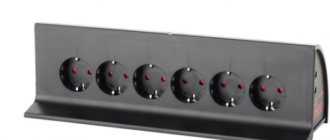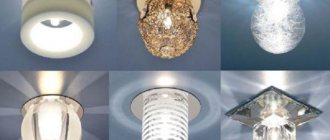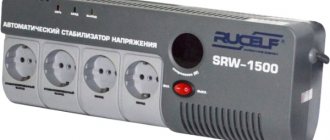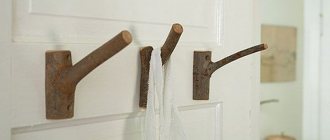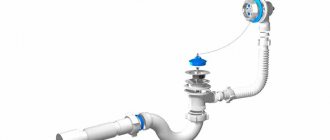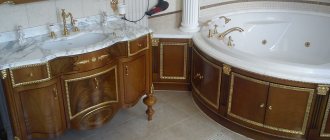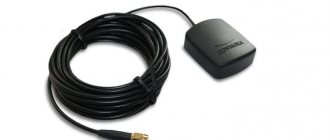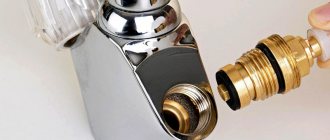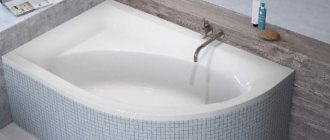Electronics, household appliances, and equipment surround a person on all sides. But there are always not enough sockets to connect. Or the cable coming from the device is too short. You can't reach the nearest outlet at all. Then an electric extension cord or, as they say, a regular carrier comes to the rescue. The device will definitely come in handy at home, at work and in the country. Useful when connecting power tools and various equipment. Let's look at how to choose a good extension cord. What is the best thing to buy for household appliances? Which one is needed for power tools and powerful devices?
Extension cord and surge protector. What is the difference?
An extension cord is a device for connecting equipment and machinery. The design is identical to a regular socket. Its purpose is to become a connector between the power source and the consumer. For example, if it is far from a stationary outlet, but you need to connect household appliances and tools, an electric carrier will help solve the problem.
The design of the device is simple. In addition to the case, cable, plug, it has 1-8 or more sockets. There may also be simple security modules. Necessary for protection against short circuit, fire, electric shock.
- A fuse or fuse link is required to physically break the electrical circuit. Triggers when the device's conductive bus begins to heat up. The reason may be a breakdown of the carrier itself or when several units of powerful equipment are connected to it, and the electrical circuit itself is designed for a smaller load.
- The current breaker is a part in the form of a button located at the end of the carrying case. Triggers when the rated current value increases significantly. When the nominal parameters return to normal, the button is pressed and the electrical circuit is closed again. You can use the connected equipment again.
What is inside:
A surge protector is a device also designed to connect devices and equipment. It differs from carrying in that it is more complexly designed. Not only reduces the distance to the outlet, but also protects the circuit from high-frequency interference and short-term voltage surges. Prevents short circuits, filters high-frequency fluctuations in the 220 V network. Why is this important?
- Office and household equipment are designed to work with a network in which the voltage frequency does not exceed 50 Hz.
- What happens if tension increases sharply? The fuses built into the equipment will blow. If the difference is too strong, the equipment will simply burn out.
To avoid the worst scenario, there are surge protectors with built-in fuses that protect against high-frequency network fluctuations.
What protective modules are included in network filters:
- Fuses (fuse links) and push-button circuit breakers, like those found in a simple extension cord.
- Varistor is a resistor with nonlinear resistance. Connected in parallel to the main bus. If the mains voltage is normal, the varistor acts as an insulator. As soon as the voltage jumps, its resistance drops sharply to zero, electrical energy is converted into thermal energy.
- LC filter - module for protection against high-frequency interference. Improves frequency characteristics, equalizes AC sinusoids in a 220 V network.
Important! Surge filters should be used in conjunction with voltage stabilizers. This is especially important if you constantly have to connect several units of household and office equipment through one carrier.
Thus, it turns out that the difference between the devices is in the degree of protection from interference from the power supply network. Ability to prevent damage and burning of connected equipment.
Network filters and pilots
A surge protector is an extension cord in which a unit is installed in the socket block, which can be called a filter. The filter can be one varistor (the blue part with two terminals, not to be confused with a capacitor) or even a whole block with chokes, varistors, suppressors and arresters.
Almost every switching power supply contains such a filter, so there is no need to buy a surge protector for city residents. It can only be useful for villagers or summer residents.
In the photo, only the upper pilot-s and lower vektor solo have a good surge protector installed. On other models there is only a varistor.
Due to the popularity of the domestic company Pilot, this name has already become a household name for all network filters.
What are they by type, purpose?
| Extension type | Subspecies | Characteristics, application |
| Household | Regular | Designed for use at home and in the office. Will come in handy at your summer cottage. You can connect household appliances, lamps, office equipment, and power tools.
|
| With USB connectors | They are classified as products for household and office use. They are convenient because in addition to connecting equipment, they can include electronics for recharging. | |
| Network filters | Household | Widely used at home and in offices. They connect household and office equipment, PCs, audio and video equipment. Protect electronics from power surges, interference, short circuits, and overloads.
|
| Power | With protective covers | Indispensable for connecting tools and electrical appliances. Used in production, construction, and repair work.
They are used in everyday life, at the dacha, industrial facilities, and construction sites. |
| On reel | Designed to connect equipment to a stationary outlet located at a distance of up to 50 m.
Areas of application: in everyday life, industry, construction, gardening. |
Extension type
First, a little theory - let's look at all the variety that you will definitely find on store shelves. So, depending on the purpose and design features, extension cords are:
- household - the simplest and most accessible. The socket block can be equipped with a power button - this is the maximum functionality for this type of device. There may or may not be grounding. The length of the wire varies from 1.5 to 10 m, the cross-section - from 0.75 to 1.5 mm, which determines the maximum power of simultaneously connected devices, but we’ll talk about this later. Regular extension cords can be connected to each other, but they do not have short circuit protection;
- network filters - These are advanced extension cords that are equipped with additional options. The contactor protects against overvoltage, the filter choke protects against high-frequency interference, and the varistor dissipates impulse noise. Some models have 1 or 2A USB connectors for charging gadgets. Surge protectors protect equipment, but they also cost quite a bit and are larger in size than conventional extension cords;
- garden extension cords The design is similar to household ones, but protected from moisture. These may be protective curtains, circuit breakers or fuses. Such devices are distinguished by a long wire - from 20 to 100 m, and can be equipped with a pin for convenient fastening in the ground. The only drawback of such extension cords is their size and inconvenience in storage.
For most of you, a regular household extension cord will do, but they are different, so first of all, you need to answer a number of questions:
- What is the distance from the outlet to the equipment?
- What equipment will be connected, what is its power?
- Under what conditions will the extension cord be used?
- What additional functions should the device have?
In fact, the answers to all these questions are the main parameters for choosing an extension cord for your home.
Degree of protection
What is the degree of protection? A classifier that determines how safe an electromechanical device is in practice. How protected from external influences: moisture, dust, solid particles, accidental penetration.
By the way! The degree of protection is an important parameter. It depends on where you can use the purchased extension cord. Only at home, in a dry room or even in damp, very dusty areas.
The most common electrical extension cords on sale are the following degrees of protection:
- IP20 - equipped with open type sockets. Designed for use inside residential buildings, offices, and industrial premises. Wherever there is no high humidity, there is little dust.
- IP44 - with a waterproof, unbreakable housing. Sockets with moisture- and dust-proof covers. They can also be used indoors, but the main purpose is dusty, damp buildings and rooms. Also suitable for outdoor use.
What degrees of protection are there:
Type, cross-section, cable length
| Cable characteristics | Description |
| Type |
|
| Section | Power or maximum permissible load is the most important parameter, which directly depends on the cable cross-section. It depends on which carrier you choose and how many devices you can connect to it. How to calculate maximum power?
Based on the maximum permissible load, there are:
The maximum permissible load is indicated on the carrying case. |
| Length | How long should the wire be? It depends on the purpose for which the extension cord is used.
|
Important! The cross-section and length of the cable, the maximum permissible load are the most important characteristics of extension cords. If you do not take into account the parameters, the electrical device will burn out. But this is not the worst thing. If the total power of the connected devices is more than the carrying capacity can withstand, a short circuit or fire may occur!
The table will help you figure it out. It indicates the permissible load values for an extension cord with copper conductors connected to a network with a frequency of 50 Hz and a voltage of 220 V.
Wire cross-section and maximum load
These two parameters are directly dependent on each other: the larger the cross-section of the wire, the greater the load it can withstand. A simple analogue is the diameter of the water pipe. The more consumers there are, the larger the pipe must be so that everyone has normal pressure.
Extension cords are made from standard wires, so the following cross-section options are possible:
- 0.75 mm2 - designed for current up to 6A or voltage 1380 W. An excellent option for lamps and chargers, as well as modern TVs - they have low power;
- 1.00 mm2 – conducts current 10A, voltage 2300 W. Suitable for connecting low-power household appliances and tools
- 1.5 mm2 – designed for current 16A, voltage 3680 W. Can be used with a washing machine, heater, or any household construction equipment;
- 2.5 mm2 and more - extension cords, needed at construction sites and in production conditions, are suitable for connecting powerful devices and equipment.
For rough calculations, you can use the following rule: 1 mm2 wire cross-section can withstand a current of 10 A.
There are even extension cords with a 0.5 mm2 core , but it is strictly not recommended to plug them into something more powerful than a table lamp. For home use, it is best to take a device with a wire of at least 1.5 mm2, so that it is a more or less universal device with protection against fools, since there will always be someone who does not look at the maximum load and connects a powerful heater to the extension cord.
Extension cords with a wire of more than 50 m must have a cable cross-sectional area of at least 2.5 mm2.
Information about the cable cross-section can be found on the wire itself - it is marked accordingly. As a rule, the outer diameter of the wire indicates the cross-section, but there are exceptions. One thing is clear - if a thin cable leads to the socket block, then it is better to connect low-power electrical appliances.
First, think about what devices you are going to connect, and then go buy an extension cord. We recommend taking it with a reserve, since in the future more powerful devices may be included in the list of connected devices. Please note that if an extension cord can withstand 10A, this does not mean that a 10A device can be inserted into every outlet. We are talking about the total load.
What happens if you exceed the permissible load? The wiring may heat up and begin to melt, the junctions of the wires may burn out, resulting in smoke and fires.
Grounding
If the outlet has a grounding contact, it makes sense to pay attention to carrying a grounding connection (an additional core wire). Why is this necessary?
- The presence of grounding is a plus for the safety of the user and connected equipment. If the device suddenly breaks down, you don’t have to worry about accidentally getting an electric shock.
- In addition, grounding is considered a good barrier to interference. Moreover, both from equipment connected in one circuit, and from what works nearby.
- This model will definitely come in handy if you plan to connect round-the-clock refrigerators, TV, PCs, and other devices.
How to choose a household electrical extension cord
Household extension cord, what should it be? Often in the operating instructions for household appliances, the manufacturer advises not to supply power through an extension cord, but to plug the appliance directly into the outlet. This is understandable, since the socket contains a wire capable of withstanding the energy consumption of such devices as a washing machine, iron, etc.
But it also happens that you can’t do without a long “helper”. So how to choose the right extension cord?
First of all, we look at the electrical extension cord. If it is flat, then it is most likely a cord, and its core cross-section usually does not exceed 0.5 mm2; such an extension cord can only include an electric razor.
For extension cords, the most optimal wire is PVA; it is round, so it will not twist during operation; the outer insulation is thick, which protects the wire from physical damage. Color does not matter.
Usually the cross-section is indicated on the wire; on household extension cords it can be 0.75 mm2, 1 mm2 and 1.5 mm2, the last cross-section is the most optimal, such a wire can withstand up to 3.5 kW. When working with an extension cord, be sure to unwind it completely, do not leave it twisted, this can lead to heating and melting of the insulation.
In addition to the wire, the extension cord has a group of sockets or simply a block, it comes in 6A, 10A and 16Amps, it is clear that the more the better. All modern sockets are divided into universal and euro; a universal socket can be plugged into any old-style or euro plug, but such an extension cord will not have a third core in the wire for grounding. However, if the outlet into which you plug the extension cord does not have a ground, then there is no point in the extension cord.
There is an opinion that the plug holds better in Euro sockets. So, if you plan to use both Euro and regular plugs, then here’s a good tip: remember which hole you insert the Euro plug into, and insert it only there. Due to the fact that the Euro plug has thick contacts, the contacts in the block diverge over time and a regular plug begins to wobble.
If, when choosing an electrical extension cord, you doubt its quality, or its declared strength, then you can very easily get out of this situation. You need to do the following: buy separately a PVS wire of 1.5 mm2, a 16A block and a plug, preferably a Euro one, it will match this wire, assemble everything yourself, and this is not at all difficult and will only take about ten minutes, and use it with confidence, By the way, many professional electricians do this.
Number, type of sockets, which plug
- It is best to choose a grounded carrier. But then it will not be possible to insert Soviet-style plugs into it. You will have to use an adapter. Or, for older appliances, select an appropriate extension cord.
- By design, the forks are collapsible and cast. Collapsible ones are good because if a breakdown occurs, the product can be easily disassembled and repaired. Cast ones are attractive because they are more reliable and will last longer. But if they break, they cannot be repaired.
- The number of sockets determines the number of devices that you can immediately connect. Standard for carrying is 2-5 sockets. Do you need more? Decide for yourself.
By the way! It is advisable that the openings of the sockets in the carrier be located at an angle of 45°. It's practical and saves space. You can easily connect several pieces of equipment. In this case, the plugs of neighboring devices will not interfere with each other.
Extension length
The next important parameter is the cable length. To branch the socket, take short extension cords with a 0.5-2 meter cable. And for repairs, construction or to the countryside, long extension cords of 50 meters or more are often taken.
The cable may become hot when you use the extension cord. The smaller the cross-section, the more the cable heats up. According to PUE 1.3.10, it is permissible to heat the cable up to +65 degrees. But if the wire is warm, the cross-section is not selected enough for the load, it is better to avoid this. The unwound cable lies on the ground and dissipates heat well.
An unwound cable heats up less.
If the cable is twisted into a coil, heat is dissipated less efficiently and the insulation may melt. This will cause a short circuit. Therefore, when connecting powerful devices, you should not leave the wire wound.
The coiled wire gets hotter
Is there a power button, surge protector, voltage protection?
Having these options is highly desirable.
- The button turns off/connects the device to the network.
- The surge protector suppresses interference generated by equipment. For residents of Russia this is a pressing issue. In our country, the current supply frequency is 50 Hz, but there is a lot of high-frequency interference in the network. The filter filters out unnecessary harmonics, which is very important for the safety of electrical devices.
- Surge protection is available in many models. However, this will only help with short-term fluctuations. If the voltage fluctuates frequently, it is better to use a stabilizer with the carrier.
Control buttons and short circuit protection
For convenience, manufacturers add a switch to the socket block. You can leave and turn off all devices with one button. If you do not plan to use it, it is better to buy an extension cord without a switch. This is an additional weak link that often fails.
Poor soldering and melted switch
Manufacturers can supply a fuse that trips when the current exceeds. Typically this protection is made of a bimetallic strip and operates slowly. In the event of a short circuit, the circuit breaker in the electrical panel will operate faster. If the cross-section of the extension cord is comparable to the cross-section of the electrical wiring in the apartment, protection from the machine in the panel will be sufficient.
To summarize: what is important?
Today the market is saturated with various types and modifications of electrical products. How to choose a product that will be reliable and of high quality. At the same time, it will satisfy the price and operational parameters. All you need is to understand the parameters of the extension cord. Understand the markings specified by the manufacturer.
- The packaging must indicate the maximum power of the connected devices.
- The withstand current must be indicated on the socket block.
- On the cable winding - the cross-section of the conductor.
- If there are frequent fluctuations in the network, it is better to choose a model with protective modules. For increased loads, the conductor cord in the carrier should be of a larger cross-section. This will prevent melting of the wiring, short circuit, and fires when the network is overloaded.
- As for grounding, electrical devices with it are more expensive. They are worth buying if the equipment in your home also has grounding plugs. Otherwise, there is no point in overpaying.
- The reliability of the wire insulation is important. Products with single-layer cable are designed to operate in gentle conditions. They are quite enough for use at home and in the office. In rooms with average humidity, temperature +20-25o C. Models with double-layer winding are designed for extreme conditions. They are not afraid of high humidity, too high or low temperatures. If necessary, such cables can be used outdoors, laid in the ground, etc.
About safe use
The electrical extension cord is intended for temporary connection. At the end of the work, the devices included in it must be disconnected from the network. It is prohibited to disassemble or change the design of the carrier yourself. Especially if electricity and everything connected with it is not your strong point. The cable should not be laid under carpet, linoleum, or through door thresholds. There is a danger of compromising the integrity of the insulation. If the winding is still broken, the electrical device is immediately turned off. Then they fix the damage or buy a new one.
Calculator for calculating the parameters of a current-limiting resistor
When installing it yourself in a backlight switch on an LED or neon light bulb, it is necessary to determine the size and power of the current-limiting resistance. The calculation can be done using formulas, but it is much more convenient to calculate the resistor parameters using a special calculator. Just enter the parameters and get the finished result. The calculator can also be useful for selecting a resistor in a factory-made backlit switch in case the resistor fails.
| Online calculator for calculating the rating and power of a current-limiting resistor | |
| Power supply voltage U, V: | |
| Voltage drop across one LED or neon bulb, V: | |
| Number of LED or neon lamps connected in series, pcs: | |
| Maximum permissible current through an LED or neon bulb, mA: | |
Reference. On an LED the voltage drop is in the range of 1.5-2 V, on a neon bulb it drops 40-80 V. The required minimum current at which the LED is guaranteed to glow is 2 mA, for a neon bulb - 0.1 mA. This data can be used for calculations on a calculator if the parameters of an LED or neon bulb are unknown.
